Choosing Private School in 2024
In January, the country celebrated National School Choice Week, giving us an opportunity to take stock of the learning options available to students and their families. Private school is one of the most common ways parents can access school choice for their children. But how many students are actually enrolled in private school across the nation, and how do parents make the decision to choose private school?
The National Center for Education Statistics (NCES) releases the biennial Private School Universe Survey (PSS) to report a definitive look at the landscape of private schools, students, and teachers across the nation. According to their latest update, 4.7 million students were enrolled in private school in the 2021-22 school year —about 8 percent of all K-12 students. This number held steady with pre-pandemic private school enrollment in the 2019-20 school year. However, there’s turnaround time between state data collection and federal reports, so the comprehensive NCES survey is not the most current information on private school enrollment.
For a more updated look at private school enrollment in 2023 and 2024, we can turn to state-level data from states with robust school choice programs like Indiana, Ohio, and Florida. These states reported private school enrollment upwards of 90,000, 170,000, and 440,000 students, respectively. Each of these totals represents significant statewide growth since the previous year, by 5 percent, 2 percent respectively and an especially striking 14 percent increase in Florida.
These snapshots of growth show that private school enrollment is on the rise, especially in the years since the pandemic. This leads to a simple question: Why?
In partnership with Morning Consult, EdChoice surveyed a nationally representative sample of American adults 18 and older (N = 2,260) from December 11-15, 2023. With additional sampling, we obtained responses from 1,320 parents of children currently in K-12 education.
We asked parents why they chose their child’s school. Among district school parents, the most common reason for choosing one school over another is location (56%). By contrast, private school parents are most likely to list a safe environment (50%) and academic quality (47%) as their top priorities.
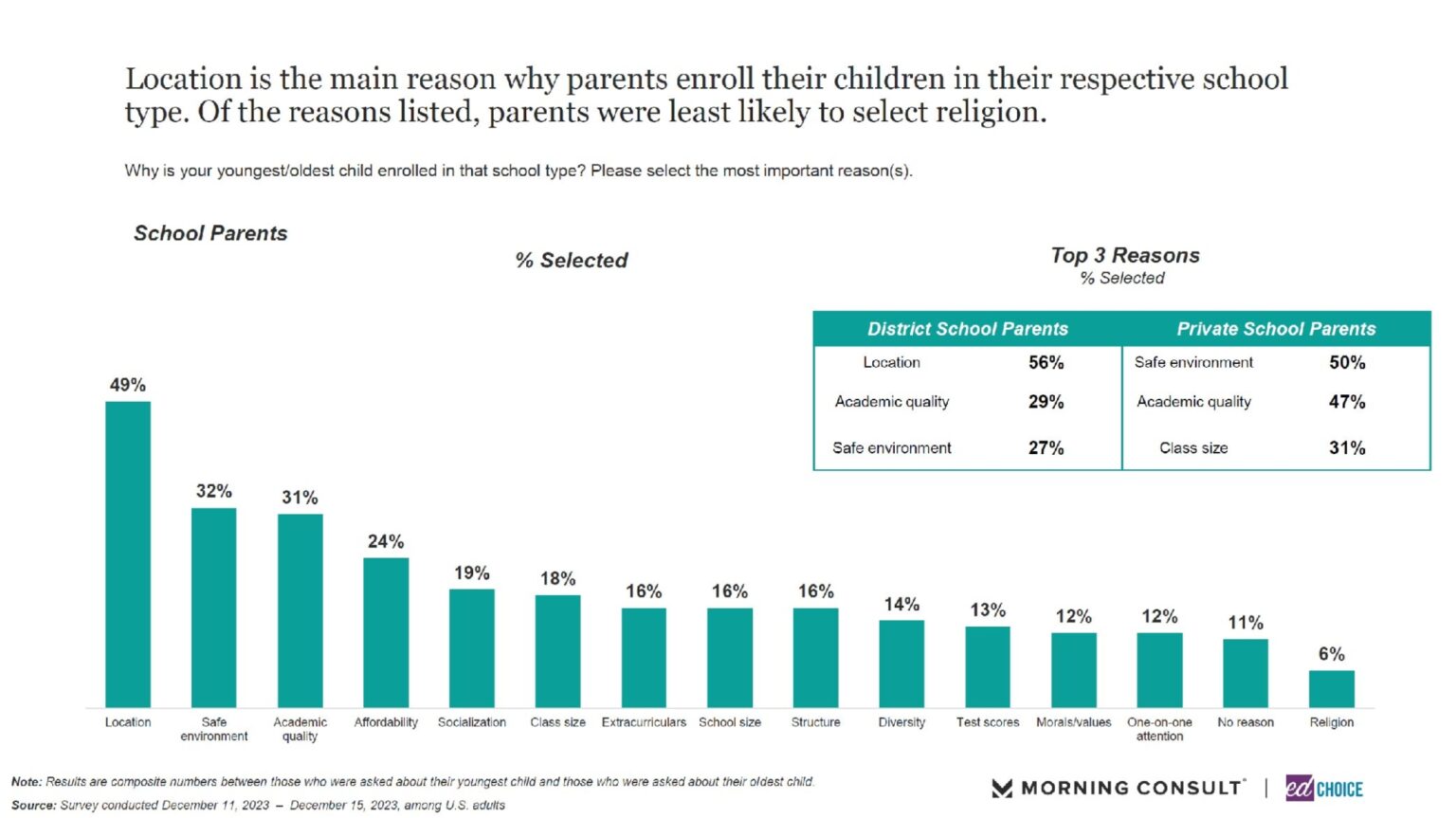
And parents appear to be happy with their choices. In our December poll, private school parents were much more likely to say that they are very satisfied with their child’s schooling experiences than district school parents. A sweeping 97 percent of private school parents indicated that they are satisfied with their child’s school, with 60 percent of them saying they were very satisfied. This is compared to 82 percent of satisfied district school parents, of whom 43 percent were very satisfied. This high level of satisfaction is consistent with parents’ positive experiences with private school since 2020, when we began tracking this question.
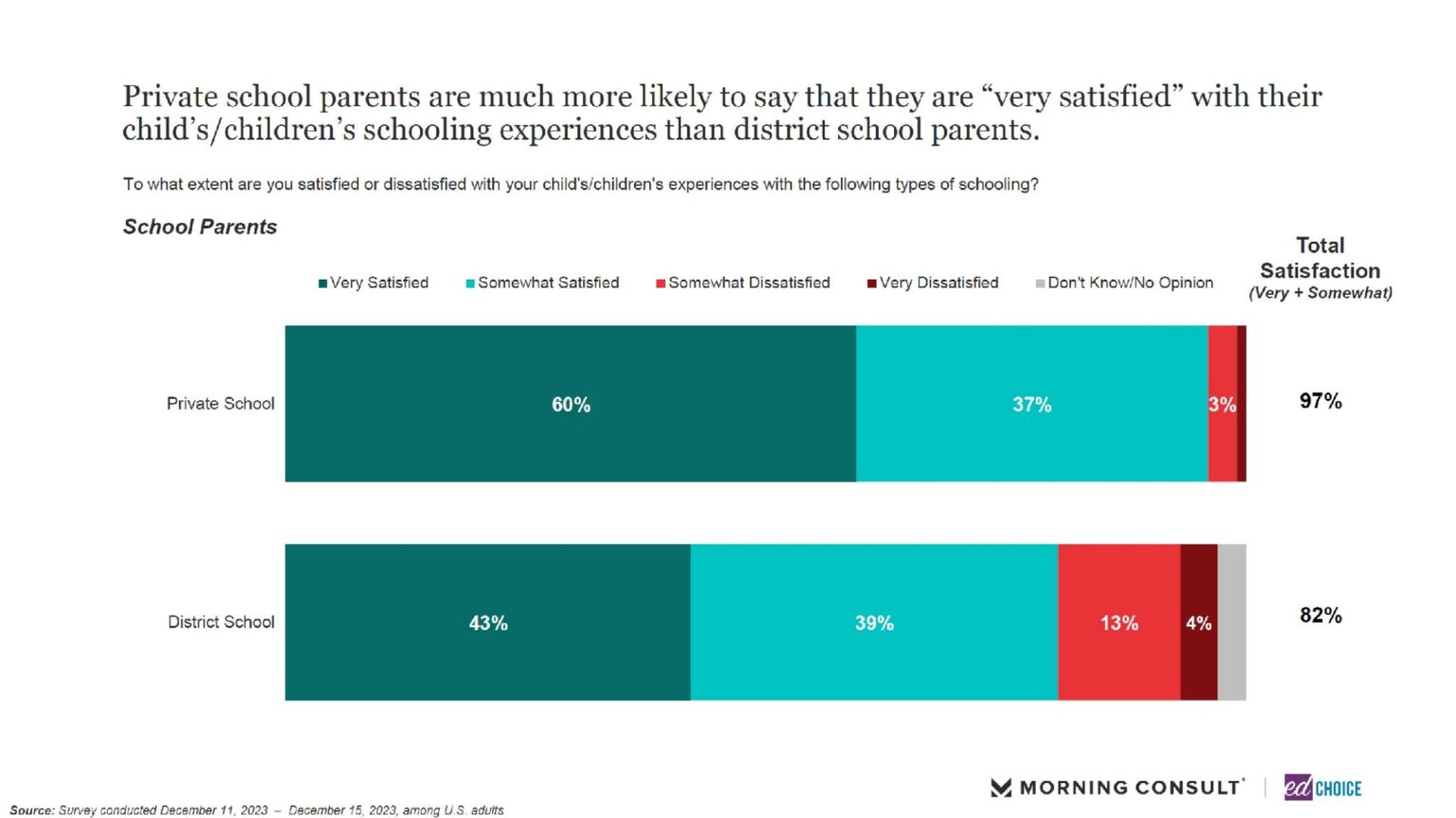
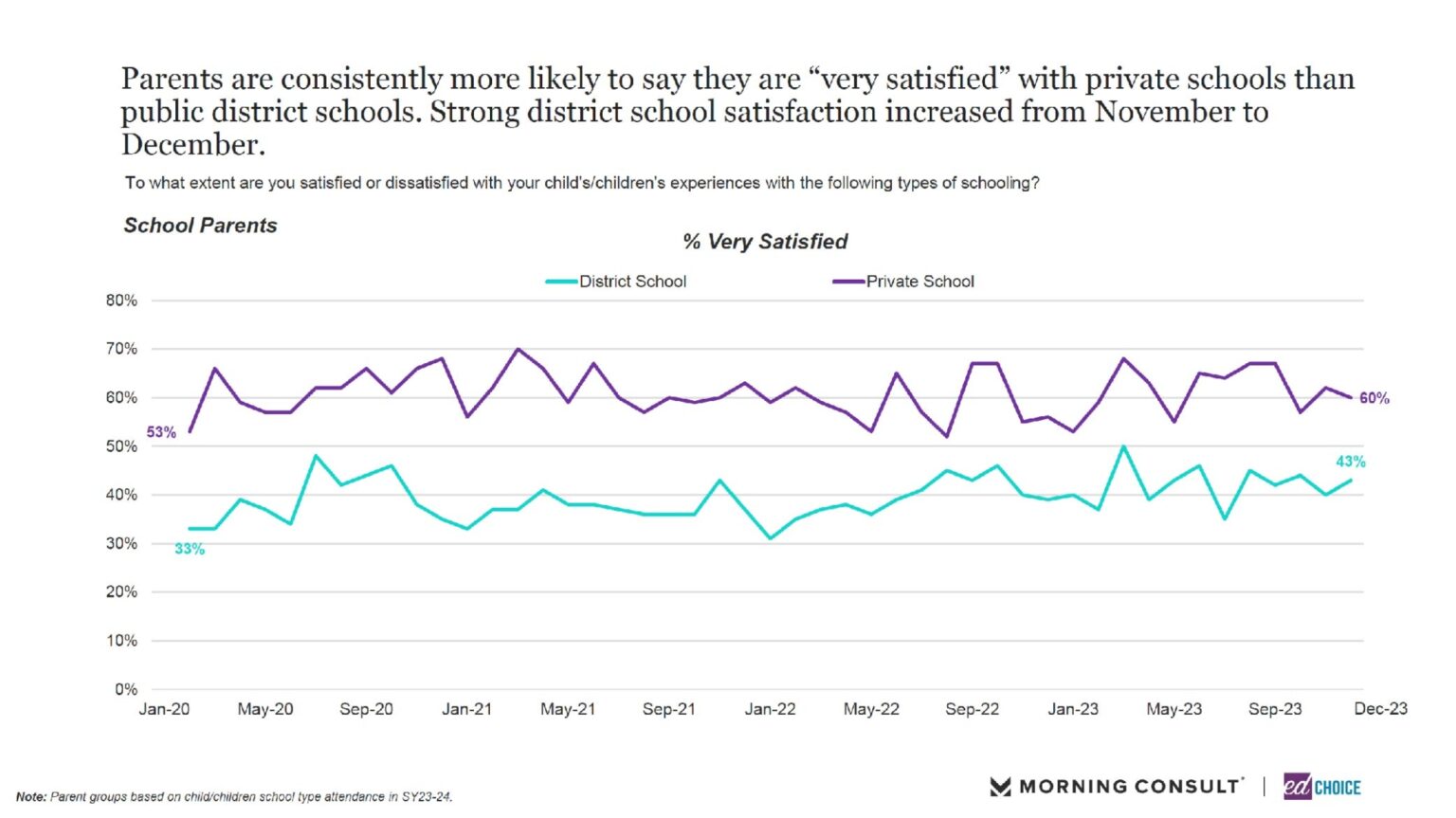 Despite clear differences in parent satisfaction, regular public school remains the most popular school type. Over forty percent (44%) of parents say they would choose public school to get the best education for their child. However, a substantial 34 percent of parents would choose private school, exhibiting a varied range of schooling preferences among school parents.
Despite clear differences in parent satisfaction, regular public school remains the most popular school type. Over forty percent (44%) of parents say they would choose public school to get the best education for their child. However, a substantial 34 percent of parents would choose private school, exhibiting a varied range of schooling preferences among school parents.
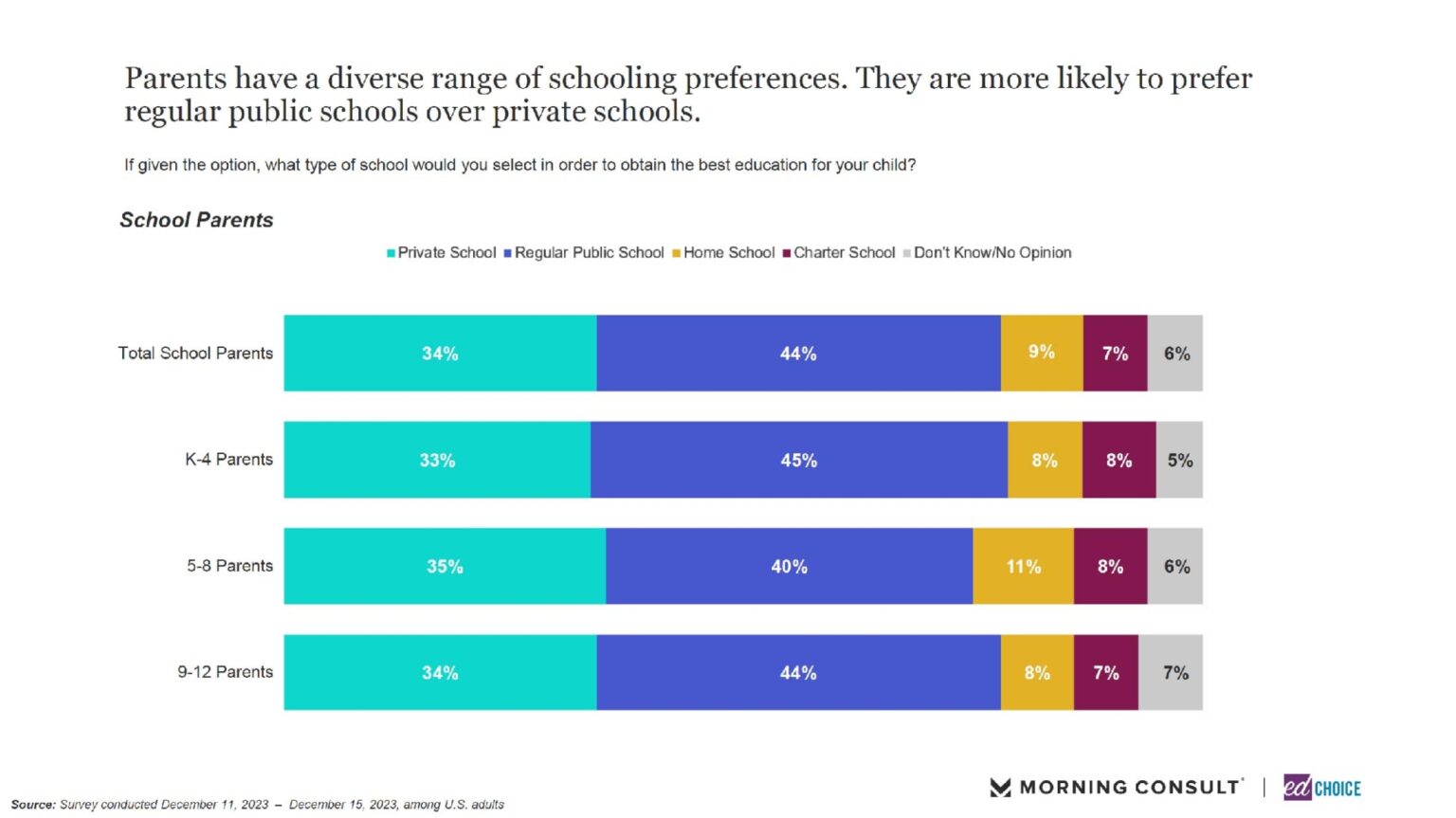
Voucher programs help school parents pay private school tuition, providing access to private school for many families. In December, 63 percent of American adults expressed support for vouchers. While parents’ support dipped slightly last month, their overall support of vouchers remains high. Nearly 70 percent (68%) of parents expressed support for school vouchers in December 2023, staying level with past support for vouchers over the last three years.
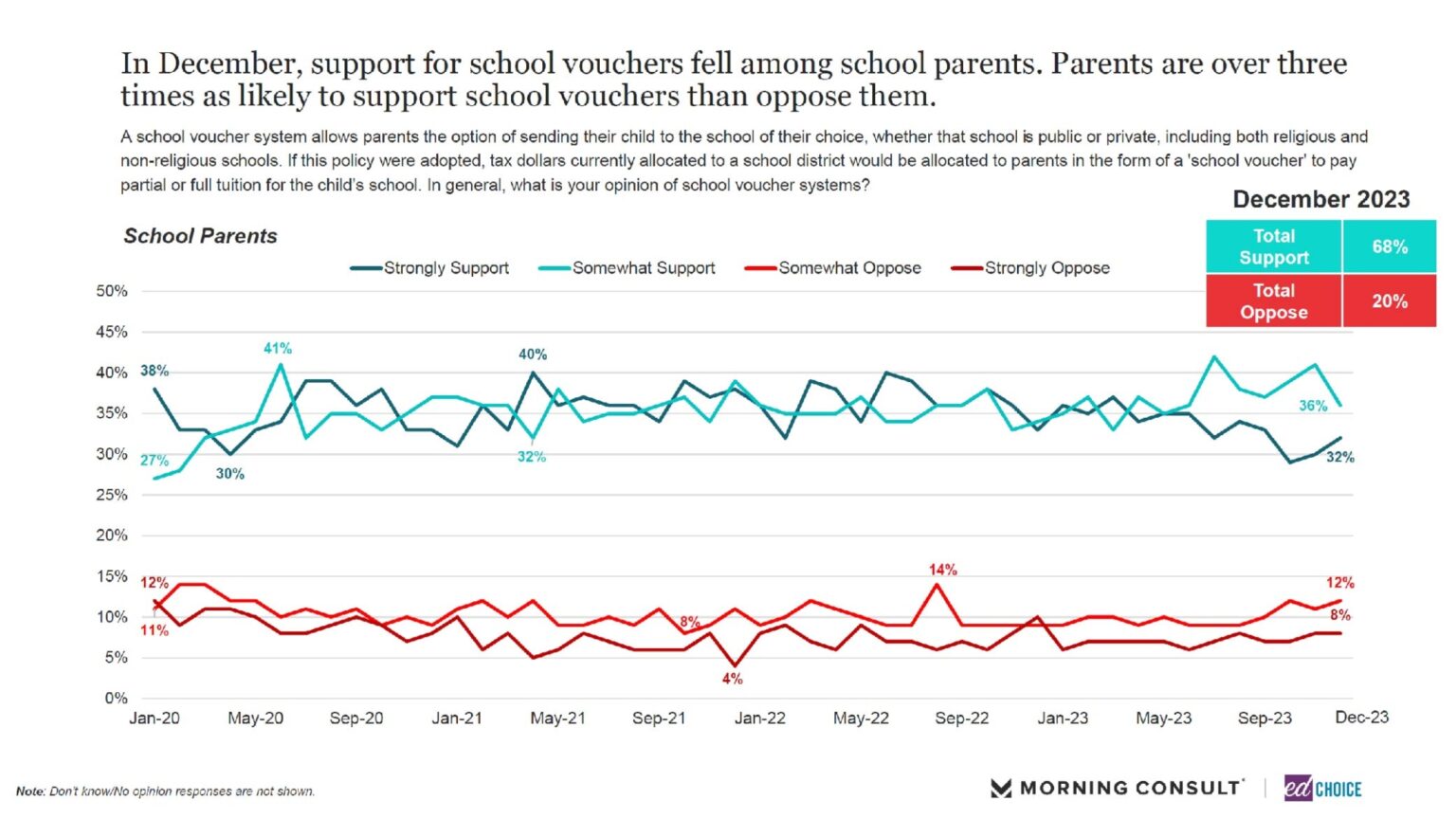
Read the full survey report.
Visit the EdChoice Public Opinion Tracker site to access past reports, crosstabs, and questionnaires. We update our national and state dashboards every month. We also provide a more in-depth description of our research and survey methods.
Our K–12 education polls archive is updated on a rolling basis, roughly a few times each month. Please don’t hesitate to let us know if we are missing any surveys, or if there are accidental errors.




